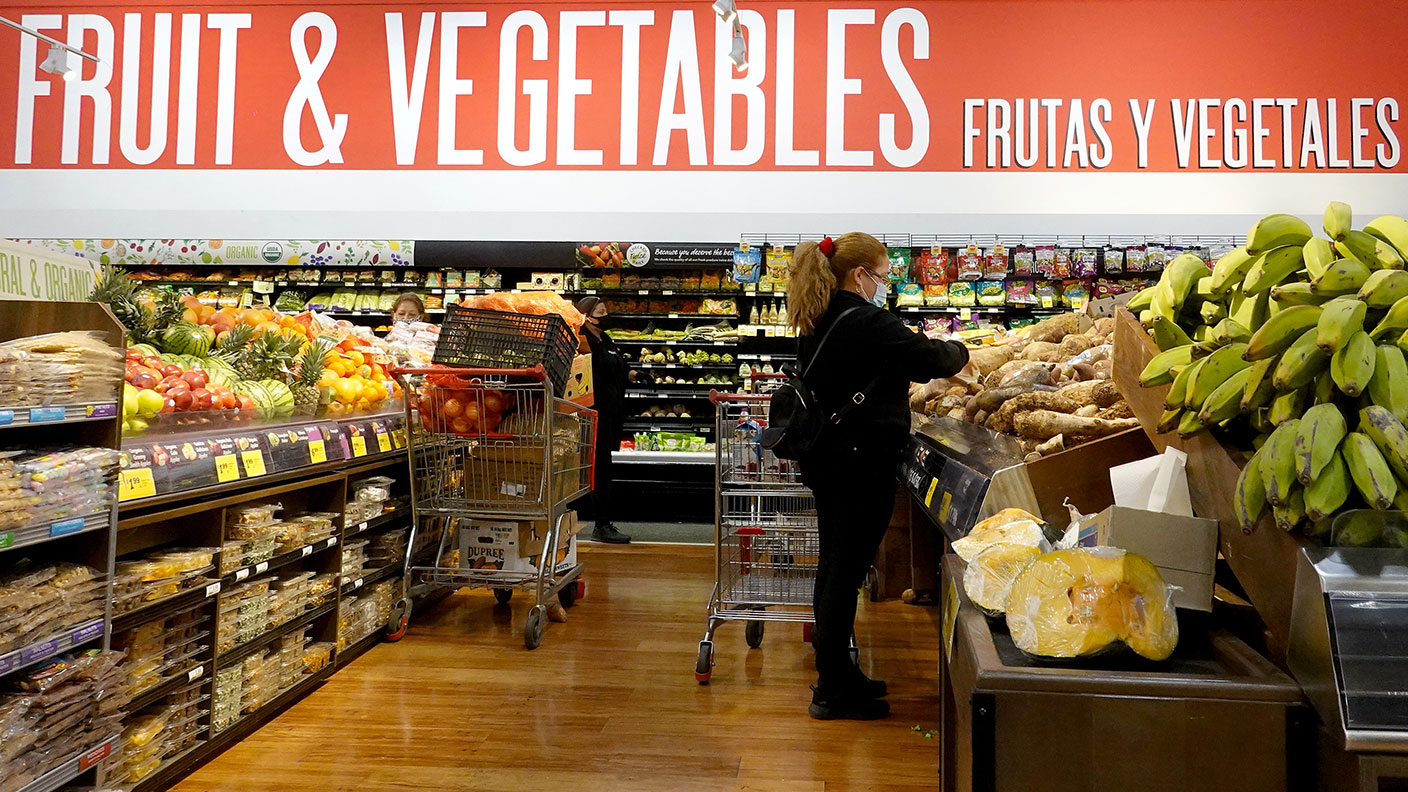The cost of living crisis is global – US inflation just hit another 40-year high
With US inflation running at 7.5%, it’s clear that the cost of living crisis is not confined to the UK. John Stepek looks at the likely reaction from governments and central banks, and what it means for you.


US inflation, once again, came in higher than expected yesterday.
It’s been happening so often recently, that you’d think that markets might start to expect that.
Anyway – prices in the US are rising at their fastest rate since 1982. Again. The headline rate of annual inflation hit 7.5% in January.
MoneyWeek
Subscribe to MoneyWeek today and get your first six magazine issues absolutely FREE

Sign up to Money Morning
Don't miss the latest investment and personal finances news, market analysis, plus money-saving tips with our free twice-daily newsletter
Don't miss the latest investment and personal finances news, market analysis, plus money-saving tips with our free twice-daily newsletter
And what’s really worrying markets now is that it looks as though the Federal Reserve might try to do something about it.
Inflation is not transitory
There’s really very little room to argue that inflation is “transitory” anymore, regardless of what definition you use.
The “transitory” argument hinges on the idea that once the Covid disruption is behind us and everything is back to “normal”, prices will go back to “normal” too. Supply will rise, demand will ease, and everything will be fine and dandy again (or secular stagnation will return, whatever your preferred view of the world).
One problem with this view is that supply chains keep being disrupted. They’re trickier to untangle than they look, so the definition of “transitory” keeps needing to be stretched. The problem you then have is that this “transitory” inflation starts to feed into “stickier” inflation because someone needs to pay for these higher costs.
There’s another, deeper problem with the “transitory” idea, which is that – I would argue – the world was already on a more inflationary path, and Covid has just interrupted and accelerated that process.
If you accept that the potency of globalisation as a disinflationary force petered out quite some time ago; and if you accept that technological advances might well be less disinflationary for the time being (eg going green is not going to be cheap in the short or medium term); then I think it becomes clear that the pandemic is more an accelerant than a cause.
Whatever your view, the fact is that the price of pretty much everything is rising now. As John Authers points out in his Bloomberg newsletter, services inflation is now at a 30-year high. That suggests that all of the inflation in goods prices – deemed to be a result of the supply chain problems, and thus “transitory” – is now spreading further.
Meanwhile, wage growth is “now above 5% for the first time in 20 years”. Wages and services prices are “sticky” – unlike commodity prices, they aren’t just going to fall sharply because supply improves or recovers.
Now none of this necessarily means that we’re heading for double-digit inflation. If energy price increases ease off (this is not a prediction, it’s just a scenario) then inflation would relax a bit too.
But there’s a big difference between the inflation rate stalling and the inflation rate going back to, or below, the standard central bank target rate of 2%.
In turn, that implies a very, very different world to the one we’ve all lived in for the past 20-odd years, and certainly very different to the post-2008 world.
And yesterday markets started to wake up to what that might mean – particularly for interest rates.
Comparisons with 1994 might be wishful thinking
Following yesterday’s punchier-than-expected inflation figures, investors now expect the US central bank, the Federal Reserve, to raise interest rates much faster and by a lot more than they did just a few short months ago.
It didn’t help that one of the rate-setters, St Louis Fed boss James Bullard, said that he hoped to see a 1% US interest rate by the middle of this year. Markets now fear that the Fed might raise rates by half a percentage point in March, and some were even muttering about an emergency hike between meetings.
Bond yields moved dramatically as a result. Some are even drawing comparisons with the “great bond massacre” of 1994. The ten-year US Treasury bond – the one everyone watches – saw its yield rise back above 2% for the first time since 2019.
What’s the likely reaction?
The Fed won’t want to see a huge amount of volatility or anything that threatens financial stability. A violent spike in interest rates could do that. So we might see some moderately soothing noises if it looks as though things are going to get out of hand.
But in terms of the overall direction, it’s worth remembering that the political calculus is trickier than usual. Inflation is now a talking point for voters – the cost of living crisis isn’t just a problem here in the UK. That means that the US government (and by extension, the Fed) needs to be seen to be doing something about it.
Given the choice between tackling inflation and propping up asset prices, the decision is no longer at all clear. So the usual “Fed put” (the assumption that the Fed would step in to save stockmarkets if they drop) is less potent than it has been for decades.
What will be interesting to see is how the Fed responds if inflation does start to peak later this year, and also what happens once the mid-term elections are over.
The reality is that it’s hard to tackle inflation actively without slowing the economy down. And while inflation is unpopular, so are recessions.
What’s interesting about the 1994 bond “massacre” is that no one really remembers it, because while the turmoil was painful, it didn’t last long. That might seem comforting. A little hiccup on the way to normality.
The problem is, we’re now a lot more indebted, rates are rising from a much lower level, and inflation is on the way up, rather than quiescent, as it was in 1994.
I suspect that the “best-case” outcome now is that inflation stabilises around the 4% mark, interest rates stay about two percentage points below that level, the economy continues to grow, and the debt is gently inflated away without any big shocks along the way.
That’s quite the wish list. Let’s hope we get lucky.
Get the latest financial news, insights and expert analysis from our award-winning MoneyWeek team, to help you understand what really matters when it comes to your finances.
John Stepek is a senior reporter at Bloomberg News and a former editor of MoneyWeek magazine. He graduated from Strathclyde University with a degree in psychology in 1996 and has always been fascinated by the gap between the way the market works in theory and the way it works in practice, and by how our deep-rooted instincts work against our best interests as investors.
He started out in journalism by writing articles about the specific business challenges facing family firms. In 2003, he took a job on the finance desk of Teletext, where he spent two years covering the markets and breaking financial news.
His work has been published in Families in Business, Shares magazine, Spear's Magazine, The Sunday Times, and The Spectator among others. He has also appeared as an expert commentator on BBC Radio 4's Today programme, BBC Radio Scotland, Newsnight, Daily Politics and Bloomberg. His first book, on contrarian investing, The Sceptical Investor, was released in March 2019. You can follow John on Twitter at @john_stepek.
-
 How gifting money this Christmas could lower your inheritance tax bill
How gifting money this Christmas could lower your inheritance tax billCash is an easy and quick present to give over Christmas – and it could protect some of your estate from the taxman down the line
-
 £100 contactless card limit to be lifted
£100 contactless card limit to be liftedConsumers will be able to set their own contactless limits from March 2026, under new rules from the Financial Conduct Authority
-
 UK wages grow at a record pace
UK wages grow at a record paceThe latest UK wages data will add pressure on the BoE to push interest rates even higher.
-
 Trapped in a time of zombie government
Trapped in a time of zombie governmentIt’s not just companies that are eking out an existence, says Max King. The state is in the twilight zone too.
-
 America is in deep denial over debt
America is in deep denial over debtThe downgrade in America’s credit rating was much criticised by the US government, says Alex Rankine. But was it a long time coming?
-
 UK economy avoids stagnation with surprise growth
UK economy avoids stagnation with surprise growthGross domestic product increased by 0.2% in the second quarter and by 0.5% in June
-
 Bank of England raises interest rates to 5.25%
Bank of England raises interest rates to 5.25%The Bank has hiked rates from 5% to 5.25%, marking the 14th increase in a row. We explain what it means for savers and homeowners - and whether more rate rises are on the horizon
-
 UK inflation remains at 8.7% ‒ what it means for your money
UK inflation remains at 8.7% ‒ what it means for your moneyInflation was unmoved at 8.7% in the 12 months to May. What does this ‘sticky’ rate of inflation mean for your money?
-
 Would a food price cap actually work?
Would a food price cap actually work?Analysis The government is discussing plans to cap the prices of essentials. But could this intervention do more harm than good?
-
 The cost of petrol in the UK compared with the rest of the world
The cost of petrol in the UK compared with the rest of the worldNews The price of petrol in the UK went through the roof last year, but has since settled. We look at how UK petrol price compares with the rest of the world.
